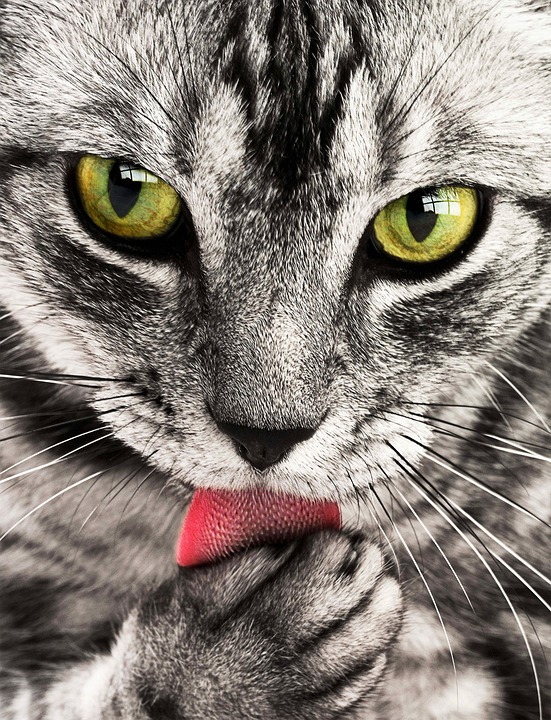Living with a diabetic cat can be challenging, but with the right knowledge and management, you can help your feline companion lead a healthy and happy life. In this article, we will explore the causes, symptoms, and proper management of diabetes in cats, offering valuable insights to pet owners. Additionally, we will address common FAQs related to feline diabetes.
Understanding Feline Diabetes
1.1 What is Feline Diabetes?
Feline diabetes is a condition characterized by high blood sugar levels in cats. It occurs when the cat’s body either doesn’t produce enough insulin or is unable to properly use the insulin it produces.
1.2 Types of Feline Diabetes
There are two types of feline diabetes: type 1 and type 2. Type 1 diabetes occurs when the cat’s pancreas does not produce enough insulin, while type 2 diabetes is characterized by insulin resistance, where the cat’s body does not respond effectively to insulin.
1.3 Prevalence of Diabetes in Cats
Diabetes is a common disease in cats, especially in older and overweight cats. It is estimated that approximately 1 in 200 cats develop diabetes.
1.4 Role of Insulin in Feline Diabetes
Insulin is a hormone that regulates the levels of glucose in the blood. In cats with diabetes, insulin injections are often necessary to help control blood sugar levels and manage the disease.
Causes of Feline Diabetes
2.1 Genetic Predisposition
Certain cat breeds, such as Burmese and Siamese, have a higher risk of developing diabetes due to genetic factors.
2.2 Obesity and Inactive Lifestyle
Obesity and a sedentary lifestyle are significant risk factors for feline diabetes. Cats that are overweight or lack physical activity are more prone to developing the disease.
2.3 Pancreatitis and Other Diseases
Pancreatitis, an inflammation of the pancreas, can disrupt insulin production and lead to diabetes in cats. Other diseases, such as hyperthyroidism and Cushing’s disease, can also increase the risk of feline diabetes.
2.4 Hormonal Disorders and Medications
Hormonal disorders, such as acromegaly and polycystic ovary syndrome, can contribute to the development of diabetes in cats. Certain medications, such as corticosteroids, can also affect insulin sensitivity and lead to diabetes.
Recognizing the Symptoms of Feline Diabetes
3.1 Increased Thirst and Urination
Excessive thirst and urination, known as polydipsia and polyuria, are common symptoms of feline diabetes. Cats may drink more water and have increased trips to the litter box.
3.2 Weight Loss Despite Increased Appetite
Despite having an increased appetite, cats with diabetes may experience weight loss. This can occur as the body is unable to use glucose for energy, leading to the breakdown of fats and proteins.
3.3 Lethargy and Weakness
Diabetic cats may appear lethargic, weak, and have a decreased interest in physical activity. This can be due to the inability of cells to effectively use glucose for energy.
3.4 Dehydration and Poor Coat Condition
Dehydration can occur in diabetic cats due to increased urination. Additionally, cats with diabetes may have a poor coat condition, with a dull and dry coat.
3.5 Vomiting and Urinary Tract Infections
In some cases, diabetic cats may experience vomiting and urinary tract infections. These symptoms can occur as a result of the body’s inability to effectively metabolize glucose.
Proper Management of Diabetes in Cats
4.1 Veterinary Diagnosis and Treatment
If you suspect your cat has diabetes, it is crucial to seek veterinary diagnosis and treatment. A veterinarian will perform blood and urine tests to confirm the diagnosis and develop a treatment plan.
4.2 Dietary Modifications
A well-balanced diet is essential for managing diabetes in cats. Your veterinarian may recommend a specialized diet that is low in carbohydrates and high in protein to help regulate blood sugar levels.
4.3 Insulin Injections and Blood Glucose Monitoring
Insulin injections are often necessary to control blood sugar levels in diabetic cats. Your veterinarian will teach you how to administer the injections and guide you on monitoring your cat’s blood glucose levels.
4.4 Regular Exercise and Weight Management
Regular exercise and weight management are crucial in managing diabetes in cats. Encouraging physical activity and helping your cat maintain a healthy weight can improve insulin sensitivity.
4.5 Stress Reduction and Environmental Enrichment
Reducing stress and providing environmental enrichment can help manage diabetes in cats. Stress can affect blood sugar levels, so creating a calm and stimulating environment is beneficial.
FAQs – Frequently Asked Questions
5.1 Can feline diabetes be cured?
While feline diabetes cannot be cured, it can be managed effectively with proper treatment and lifestyle modifications.
5.2 Are there any specific cat breeds more prone to diabetes?
Certain cat breeds, such as Burmese and Siamese, have a higher predisposition to developing diabetes.
5.3 Can a cat with diabetes be on a raw food diet?
It is not recommended to feed a cat with diabetes a raw food diet. A specialized diet recommended by your veterinarian is the best option for managing the disease.
5.4 What are the potential complications of feline diabetes?
Complications of feline diabetes may include ketoacidosis, neuropathy, and an increased risk of infections.
5.5 How often should a diabetic cat be taken for veterinary check-ups?
Regular veterinary check-ups are essential for monitoring a diabetic cat’s condition. Your veterinarian will recommend the appropriate frequency for check-ups based on your cat’s specific needs.
Conclusion
By understanding the causes, symptoms, and proper management of diabetes in cats, you can provide your feline companion with the necessary care and support. Regular veterinary check-ups, a well-balanced diet, insulin administration, and a stress-free environment are crucial in ensuring your cat’s well-being. Remember, with proper attention and care, your diabetic cat can live a long and fulfilling life.








